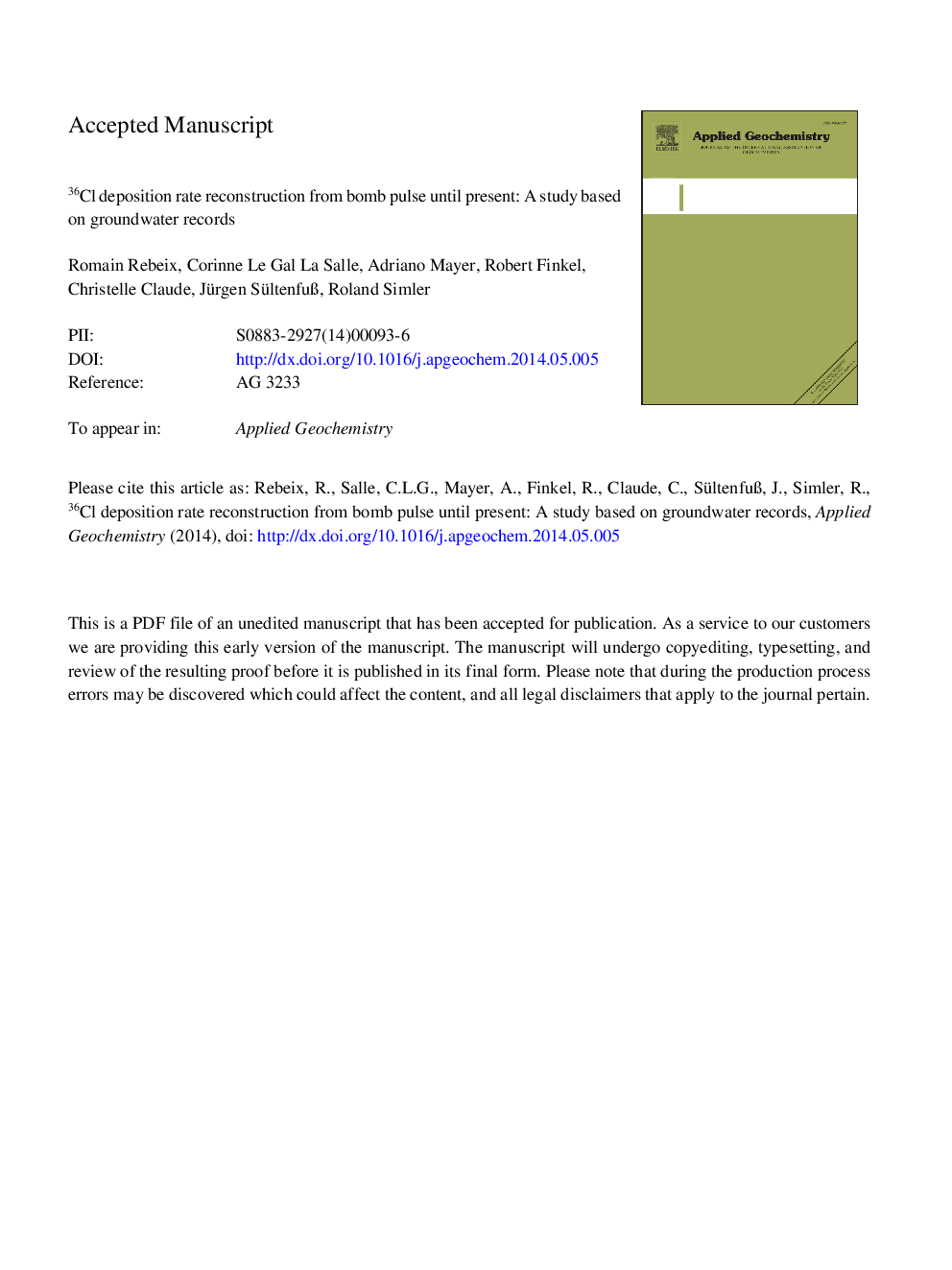| کد مقاله | کد نشریه | سال انتشار | مقاله انگلیسی | نسخه تمام متن |
|---|---|---|---|---|
| 6335140 | 1620241 | 2014 | 37 صفحه PDF | دانلود رایگان |
عنوان انگلیسی مقاله ISI
36Cl deposition rate reconstruction from bomb pulse until present: A study based on groundwater records
دانلود مقاله + سفارش ترجمه
دانلود مقاله ISI انگلیسی
رایگان برای ایرانیان
موضوعات مرتبط
مهندسی و علوم پایه
علوم زمین و سیارات
ژئوشیمی و پترولوژی
پیش نمایش صفحه اول مقاله

چکیده انگلیسی
The radioactive isotope 36Cl, with a half-life of 301 ka, is a valuable chronometer for estimation of groundwater residence time up to 2 millions of years. Aerial thermonuclear fission bomb tests, performed during the late 1950s, injected a massive amount of this isotope into the atmosphere, which exceeded the natural fallout signal. Since this bomb pulse, atmospheric 36Cl deposition tends to return to natural fallout rate. The monitoring of this attenuation can provide a good opportunity to extend the use of this chronometer to shorter time spans. Venice's lagoon alimentation zone shows groundwaters with residence times distributed over last fifty years. This permits the estimation of a continuous 36Cl deposition curve, free from latitudinal and seasonal variations of the signal. Three old groundwater samples, with residence times comprised in the range â900 to â8000 BP, allow the estimation of a mean natural deposition of 49 at mâ2 sâ1 and are in good agreement with 36Cl fallout observed for the last 40,000 years by (Plummer et al., 1997). For the bomb pulse period, a fallout of 5300 at mâ2 sâ1 was calculated. This was followed by a strong attenuation period, taking place until the 1980s, during which the fallout reached values ranging between 167 and 354 at mâ2 sâ1. The attenuation reached then a plateau: it experienced a slower lowering until the actual deposition, with fallout values calculated between 124 and 252 at mâ2 sâ1. This persistence of high deposition rate was classically attributed to biological and atmospherical recycling processes or underestimation of the natural atmospheric production of the 36Cl. Additional source of 36Cl production has been envisaged through the activation of chlorine radicals from stratospherical CFCs, leading to a 36Cl production rate comparable with that of Ar spallation from the first approximation. Lastly, the latitudinal factor of the attenuation of the fallout rate is discussed and the impact of the jet streams is proposed as an explanation for the discrepancies in the attenuation rate.
ناشر
Database: Elsevier - ScienceDirect (ساینس دایرکت)
Journal: Applied Geochemistry - Volume 50, November 2014, Pages 199-208
Journal: Applied Geochemistry - Volume 50, November 2014, Pages 199-208
نویسندگان
Romain Rebeix, Corinne Le Gal La Salle, Adriano Mayer, Robert Finkel, Christelle Claude, Jürgen SültenfuÃ, Roland Simler,